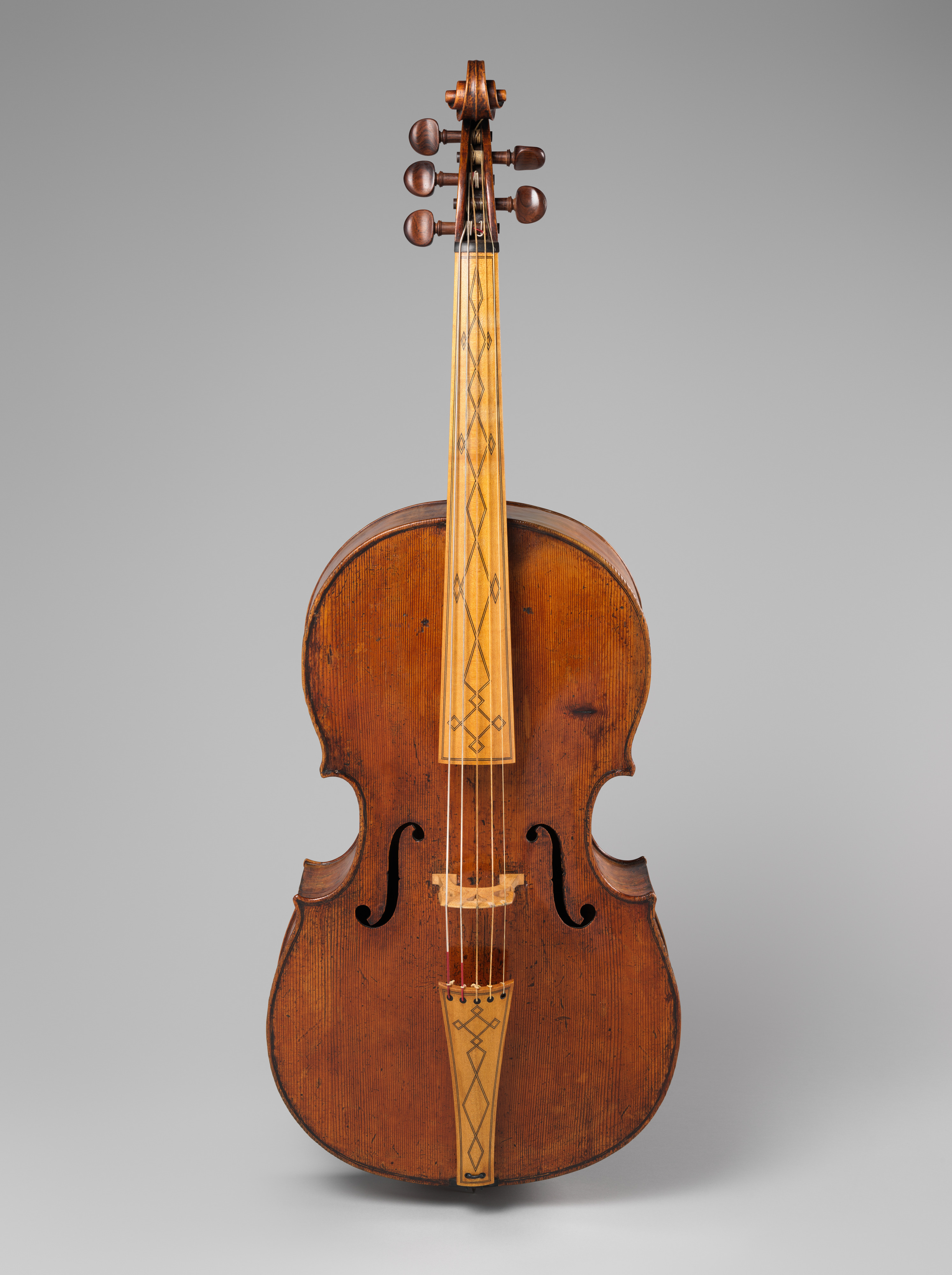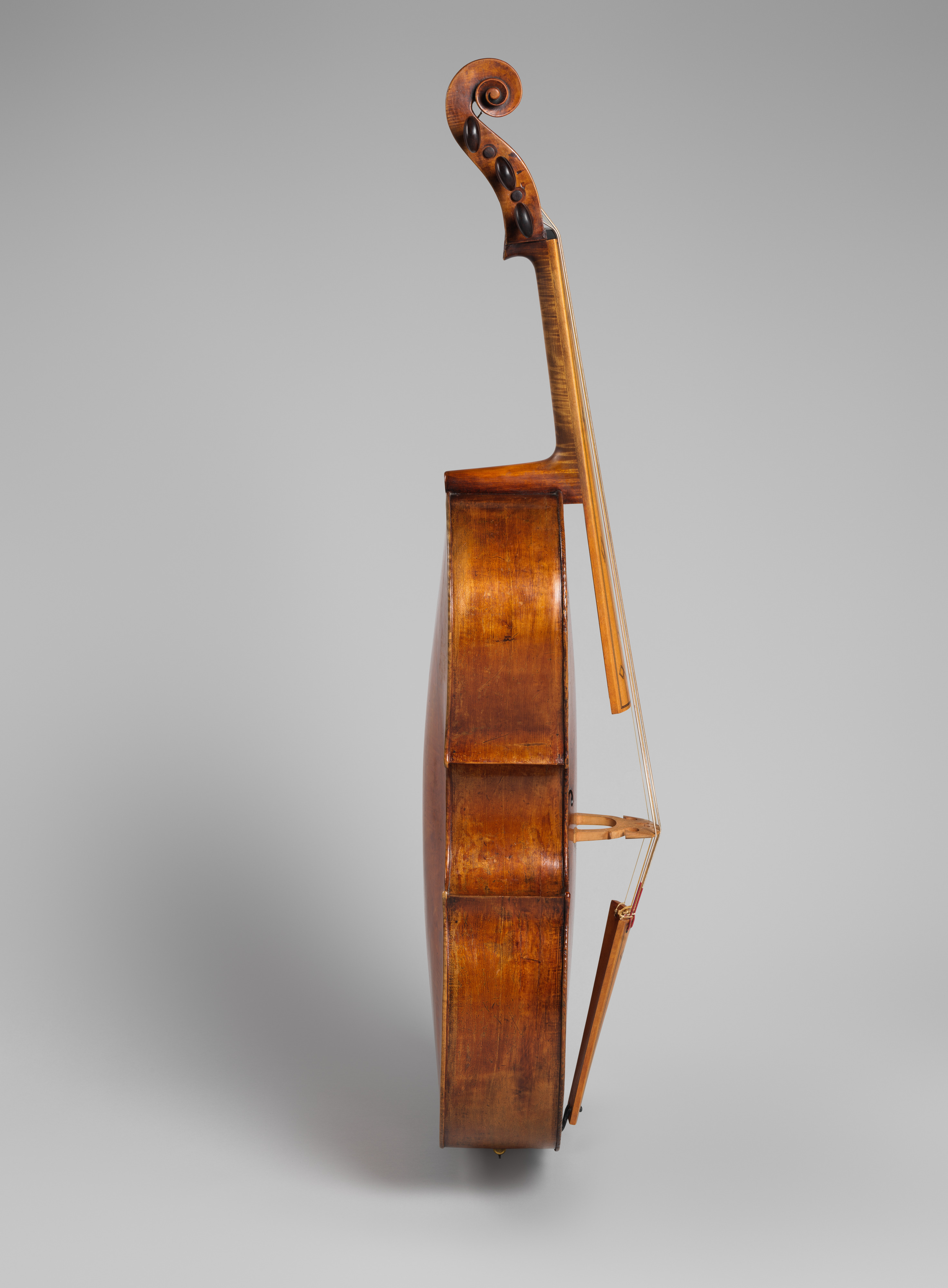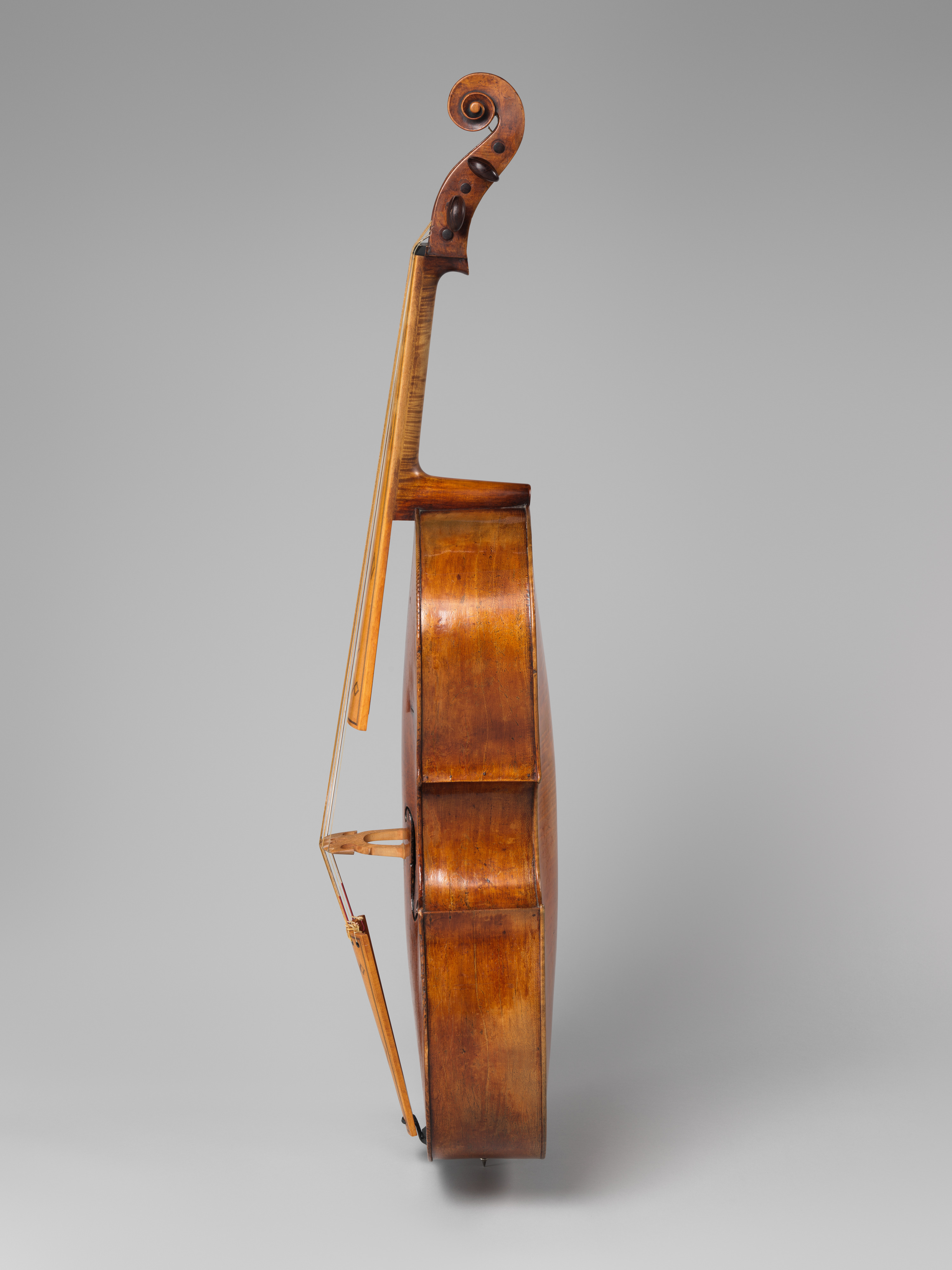You must join the virtual exhibition queue when you arrive. If capacity has been reached for the day, the queue will close early.
Learn more
Jump to content tickets Member | Make a donation
- The Collection
- The American Wing Ancient Near Eastern Art Arms and Armor The Michael C. Rockefeller Wing Asian Art The Cloisters The Costume Institute Drawings and Prints Egyptian Art European Paintings European Sculpture and Decorative Arts Greek and Roman Art Islamic Art Robert Lehman Collection The Libraries Medieval Art Musical Instruments Photographs Antonio Ratti Textile Center Modern and Contemporary Art
Crop your artwork:
Scan your QR code:
Gratefully built with ACNLPatternTool
Brothers Amati Italian
Not on view
Five-string cello, the back of two pieces of slab cut, highly figured maple extended with additional wings in the treble and bass bouts, ribs of slab-cut maple of similar stock, original scroll of finer and faintly figured maple; the belly of two pieces of spruce with strong, regularly spaced grain of medium width, marked by a distinctive knot on the upper treble bout; the whole with copious orange-brown varnish over a glowing golden ground. All elements are original except for the neck, fingerboard, tailpiece, bridge and pegs. The instrument is in Baroque set up as configured for Amaryllis Fleming in 1971.
This cello traces its history back to the formative years of the instrument in the mid 16th century. During this period, innovative makers like the Amati family experimented with a wider range of violin-family instruments than later became standard. Cellos were made in various sizes, including smaller examples that existed alongside the larger form of the instrument, which was often referred to as "basso." With a body length of 70.6 cm, this cello is some six centimeters shorter than the size that subsequently became standard for the instrument. Contemporaneous paintings depict smaller cellos being supported on the performer’s body with a carrying strap that enabled the instrument to be played while standing or on the move. A hole in the back of this cello that has subsequently been infilled with a peg was probably the fixing point for such a strap. Experimentation also extended to the number of strings on the cello, with some examples having a few as three strings and others upwards of five.
By dint of its smaller size, this cello survives in substantially original condition and has escaped the fate of the larger cellos made by Andrea Amati and the Brothers Amati, all of which appear to have been cut down to reduce their length. It exhibits all the defining elements of violin-family instruments as pioneered by the Amati dynasty, including the iconic scroll-shaped pegbox and f-shaped soundholes, distinctive outline and architecturally inspired arching of the body, and a rare abundance of richly luminous gold-brown Cremonese varnish.
The five-string cello was most famously called for in the sixth cello suite of J.S. Bach. The cellist Amaryllis Fleming, a pioneer of the early music movement, used this instrument to illuminate the little-explored world of the Baroque five-string cello and rose to fame as the first to play Bach’s cello suites on the instrument that best fulfilled the specifications of his music.
Bradley Strauchen-Scherer, 2023
Open Access
As part of the Met's Open Access policy, you can freely copy, modify and distribute this image, even for commercial purposes.
API
Public domain data for this object can also be accessed using the Met's Open Access API.
- Download image





This artwork is meant to be viewed from right to left. Scroll left to view more.
Artwork Details
Use your arrow keys to navigate the tabs below, and your tab key to choose an item
Title: "Amaryllis Fleming" Cello
Maker: Brothers Amati
Date: 1610-1620
Culture: Italian
Medium: Spruce, maple, varnish, ebony, gut, metal
Dimensions: Length of back: 70.7 cm
Upper bouts: 35.35 cm
Middle bouts: 23 cm
Lower bouts: 42.45 cm
Vibrating string length: 64cm
Classification: Musical instruments
Credit Line: Purchase, 2020 Benefit Fund, Amati Gifts, in honor of Sally B. Brown, and Robert Alonzo Lehman Bequest, 2023
Accession Number: 2023.331
Learn more about this artwork
Related Artworks
- All Related Artworks
- By Brothers Amati
- Musical Instruments Department
- Chordophones
- Ebony
- Maple
- Metal
- Softwood
- Spruce
- Violoncellos
- Wood
- From A.D. 1600–1800
"Antonius" Violin
Antonio Stradivari (Italian, Cremona 1644–1737 Cremona)
1711
"Francesca" Violin
Antonio Stradivari (Italian, Cremona 1644–1737 Cremona)
1694
"Gould" Violin
Antonio Stradivari (Italian, Cremona 1644–1737 Cremona)
1693
Division Viol
labeled Richard Meares (British, London 1647–1725 London)
ca. 1680
Violin
Joachim Tielke (German, 1641–1719)
ca. 1685
Resources for Research
The Met's Libraries and Research Centers provide unparalleled resources for research and welcome an international community of students and scholars.
The Met Collection API is where all makers, creators, researchers, and dreamers can connect to the most up-to-date data and public domain images for The Met collection. Open Access data and public domain images are available for unrestricted commercial and noncommercial use without permission or fee.
Feedback
We continue to research and examine historical and cultural context for objects in The Met collection. If you have comments or questions about this object record, please complete and submit this form. The Museum looks forward to receiving your comments.
Musical Instruments at The Met
The Museum's collection of musical instruments includes approximately 5,000 examples from six continents and the Pacific Islands, dating from about 300 B.C. to the present.




